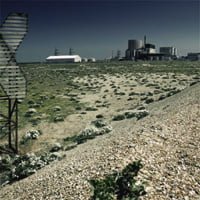
On 29th November 2005, the Prime Minister Tony Blair announced a wide-scale review of the UK’s future energy needs to specifically look into the option of building new nuclear power stations. The results of the review were published in the summer of 2006.
Nuclear power is an important source of energy in this country, accounting for about 20% of energy supplies. This figure is small when compared with a country like France that generates almost 75% of its energy needs from nuclear power stations. It is important for Britain to develop new energy sources because oil and gas supplies are declining. Before it does so, however, it is important to make sure that existing sites are cleaned up safely.
A planning framework

To understand the process of nuclear decommissioning, it is helpful to look at the life cycle of a typical reactor site.
This case study shows how the NDA is working to a well-organised planning framework to achieve its objectives.

The principle behind Management by Objectives (MbO) is to make sure that everyone in the organisation has a clear understanding of the objectives of the organisation and their responsibilities in achieving those targets.
You can easily see how this relates to the NDA. The NDA has a clear sense of direction which is set out in a mission statement. The mission and the objectives associated with it are then communicated to everyone involved in the process of environmental restoration.
The MbO process can be seen as a cyclical one. An overall sense of direction is given through a mission statement (overall purpose). This makes it possible to establish objectives.
Progress in meeting objectives is monitored and evaluated so that managers can see if targets have been achieved. This is then used to check if any of the original objectives need to be adjusted.
Mission
The NDA has established its mission as: ‘to deliver a world class programme of safe, cost-effective, accelerated and environmentally responsible decommissioning of the UK’s civil nuclear legacy, in an open and transparent manner and with due regard to the socio-economic effects on our communities’.
What does this mean in practice? It is helpful to look at some of the component parts of the definition:
- Safe safety is the number one priority in decommissioning nuclear sites. This includes the safety of the people carrying out the work and the local communities.
- Cost effective carrying out the work using contractors who provide good value for money (coupled with safety). Giving the best possible value to the taxpayer.
- Environmentally responsible using the best available environmentally-friendly techniques.
- Open and transparent way keeping nothing secret, engaging the public and other stakeholders in conversations about the process and future plans and objectives at all times.
- Socio-economic effects on communities looking at how closing down plants will affect the livelihoods of people that work in the plants and in local businesses and looking to reduce any negative impacts.
A mission statement:
- gives a sense of direction
- helps to motivate members of an organisation
- lets outsiders know what the organisation stands for
- shapes the values of the organisation.
The NDA’s mission shapes its values, which are:
- safety
- security
- environmental protection
- value for money
- openness and transparency.
Organisational objectives
Objectives are more precise than the mission of an organisation. Well-focused objectives usually have a number of characteristics. In business we say that objectives need to be SMART. This stands for:
- Specific so it is clear and easy to understand what needs to be achieved
- Measurable we need to be able to measure whether the objectives have been met or not
- Achievable there is no point in setting objectives that can’t be achieved because this will be de-motivating and leave the organisation open to criticism – ‘you failed to meet your objectives’
- Realistic the organisation needs to have the appropriate resources to meet its objectives
- Time-related there needs to be a specific calendar for achieving the objectives.

NDA’s core objective is to make sure that the 20 civil public sector nuclear sites are decommissioned and cleaned up safely, securely, cost-effectively and in ways that protect the environment for this and future generations.
If we examine this objective it is easy to see that it is:
- specific – it specifies that these 20 sites will be cleaned up
- measurable – the objective will be achieved when these sites are cleaned up
- achievable – given government support and backing
- realistic – the NDA has set out a plan to make sure that appropriate contractors are appointed to decommission the sites
- time-related activities are scheduled for each site on the NDA’s annual plan.
The NDA is responsible for creating a plan to clean up a range of sites, including:
- those nuclear sites and facilities which were developed in the 1940s, 1950s and 1960s to support the Government’s research programmes and deal with the wastes, materials and spent fuels produced by those programmes
- the Magnox fleet of nuclear power stations built in the 1960s and 1970s. They include the plant and facilities at Sellafield used for the reprocessing of Magnox fuel and all associated wastes and materials.

The role of the NDA is to create the overall strategic plan for decommissioning nuclear facilities in the UK. The tactics, i.e. the day-to-day management of this process, is the responsibility of contractors who manage the activities on those sites. The contractors are selected through open competition in accordance with EU Procurement rules within a framework set out by the NDA.
It is helpful to look at a few of the most important elements of the NDA’s strategy.
1. The reduction of potentially high hazards, especially at Sellafield. This is the number one clean-up priority. The NDA has established time-related objectives for this. For example, the aim is to decommission the Magnox fleet of power stations within 25 years (providing safe waste management facilities are available). This part of the strategy involves speeding up existing arrangements. A business case for Government approval for this acceleration is being prepared. Previous plans and methods involved taking up to 125 years for this process.
2. Consulting with stakeholders at each site about the dates and potential uses of sites once decommissioning has been completed.
3. The NDA will be open and transparent about the process of nuclear decommissioning. It is important that the public has as much knowledge as possible about the process. A criticism in the past was that the general public did not know enough about the nuclear industry.
4. Establishing a range of facilities to use, develop and extend the existing skills base. These will be developed with other organisations and many will be based in West Cumbria (the location of Sellafield). These will include:
- a Nuclear Academy to provide courses and business support training up to foundation degree level
- a Nuclear Institute to provide high quality research and development support
- a university Chair of Epidemiology to research the impact of radiation on the workforce
- a National Nuclear laboratory to provide world-class facilities to support the industry.
All this will provide a framework for specific training courses, PhDs and innovation projects and will create a pool of world-class expertise in decommissioning. This will support the UK industry and other countries involved in nuclear decommissioning worldwide.
The proposed approach that the NDA hopes to take will involve the following stages:
- to consult and seek agreement with stakeholders, including local communities, at each of the sites
- to have fully costed plans, by April 2008, for decommissioning all sites, which will then be made publicly available
- to work with contractors to use innovation and new methods of working in developing the plans. This will accelerate work without compromising on safety, security and environmental protection
- to explore the possibility of fully decommissioning Magnox sites within 25 years
- to introduce competition for the management of the sites. This will encourage innovation, improve contractor performance and deliver best value to taxpayers.

A stakeholder is anyone that has an interest in an organisation. The NDA has a lot of important stakeholder groups in the UK as the future of energy supply is such an important issue.
Key stakeholders include:
- the government. The government has a responsibility to make sure that this country has a secure, safe and efficient energy industry.
- energy consumers. We all want cheap and clean fuel. There are three main types of consumers: households using energy for heating, lighting, cooking, hot water etc; business users using energy to power machinery, provide fuel for transport, etc.; public service providers using energy to heat schools, illuminate operating theatres in hospitals, etc.
- local communities. People that live close to energy producers have a stake in a variety of ways. For example, the plant and facilities create jobs for local people. In addition, the sites may have health and safety risks associated with them. Contamination from energy sources also creates pollution
- the media and public opinion. The type of energy we use is an issue of major public debate. Some people argue that coal-fired stations create too much carbon dioxide pollution. Others say that wind farms create eyesores. Others argue that nuclear waste is a potential threat to public safety and a possible source of terrorist activity.
- the energy companies. Companies such as British Energy and British Nuclear Group producing or distributing energy.
- the regulators. They are responsible for creating the rules and supervising competition in the energy industry.

Through this process the NDA gains useful insights that help to shape the strategy. These events and meetings also provide an opportunity to explain the NDA’s responsibilities in setting out arrangements for consulting stakeholders.
Communications
The NDA has communicated its ongoing plans in different ways, including:
- on its website
- through a media pack for national and local newspapers
- by encouraging members of the public and others to send in their comments.
The NDA has kept a record of all these comments and has responded to opinions and ideas in creating a strategy to serve the needs the community at large. The NDA has carried out an environmental assessment of its ongoing plans and of the impact of existing nuclear sites.

Currently the government is investigating the future of energy supply in this country including nuclear energy. In the meantime the government must make sure that all the old nuclear sites in this country are decommissioned.
This must be done in a transparent and clean way. The NDA is the body responsible for creating the plan for this.
